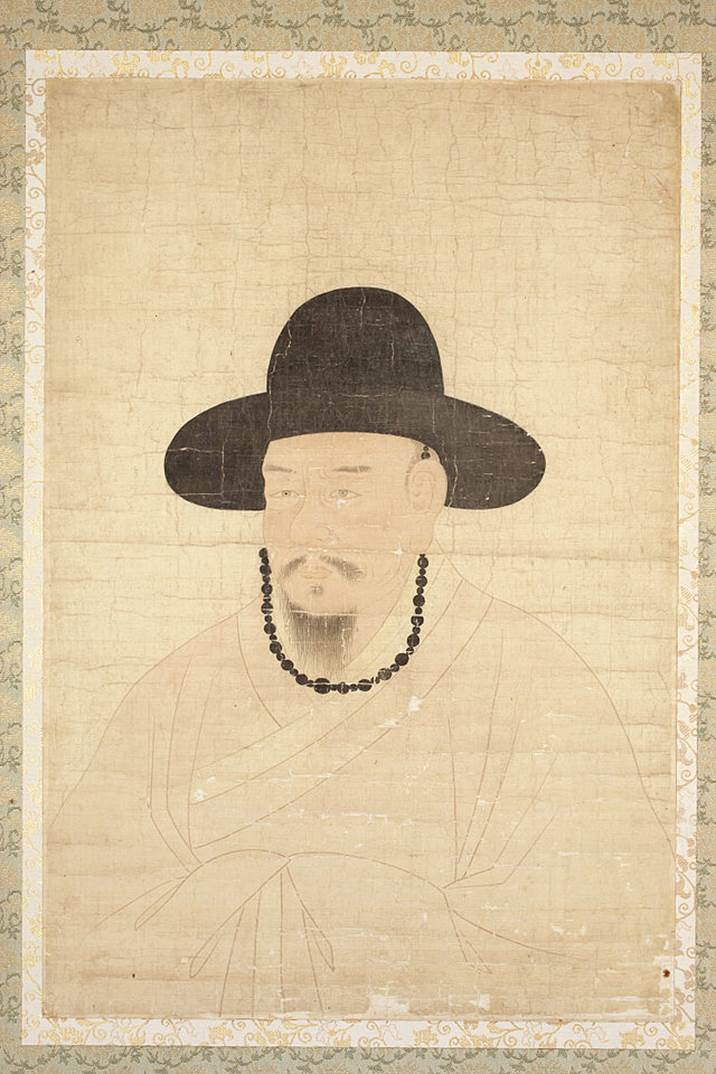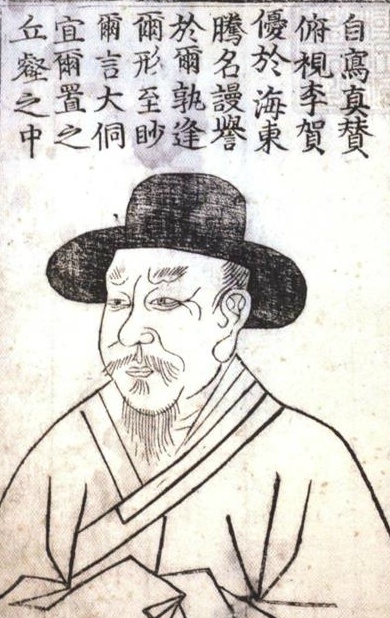ZEN MESTEREK ZEN MASTERS
« Zen főoldal
« vissza a Terebess Online nyitólapjára

김시습 / 金時習 Gim Siseup (1435-1493)
Dharma name: 설잠 / 雪岑 Seoljam
aka Kim Sisŭp / Sŏlcham
(Magyar átírás:) Kim Sziszup / Szolcsam
![]()
PDF: Lászlók András: A buddhizmus története a korai Choson korban
Kim Sisŭp (1435-1493), szerzetesi nevén Sŏlcham, aki egyben a koreai szépirodalomnak is kiemelkedő egyénisége. Mivel a hagyomány szerint már ötévesen képes volt klasszikus kínai írásjegyekkel verseket írni „isteni gyermeknek” tartották és híre még Sejong királyhoz is eljutott. A király kiküldte hozzá egyik hivatalnokát, aki megbizonyosodott a gyermek képességeiről és tájékoztatta a királyt arról, hogy nagy hasznára válhat még a birodalomnak. 68
Huszonegy évesen állt szerzetesnek nem sokkal azután, hogy Sejo királyt megkoronázták. Sŏlcham a felavatása utáni időszakot vándorlással vagy elhagyott helyeken remeteként töltötte.69
A sŏn gyakorlatot egy Chun nevű idős szerzetestől tanulta meg. Ebben az időben írta Sayu rok (Feljegyzés a négy irányba történő vándorlásról, 四遊錄) című művét, amit már mélyen áthatott a sŏn szellemisége. Harmincegy éves korában a Kŭmo-hegy környékén telepedett le hat évre. Ekkor írta Kŭmo sinhwa (Új történetek a Kŭmo-hegyről, 金鰲新話) című művét, amely Korea első klasszikus kínai nyelven írt regénye. 70
Sŏngjong király (u. 1469–1494) trónra lépésekor Szöul közelében a Surak-hegyen telepedett le, ahol tíz évet töltött remeteségben. Ebben az időszakban írta a sŏn és a kyo kapcsolatát elemző műveit, köztük a Lótusz sūtrához és az Avataṃsaka sūtrához írt kommentárt. Legfontosabb művének Ŭisang A dharma-természet dala című verséről írt elemzése tekinthető, ami a dalra a sŏn gyakorlat szempontjából tekint.71 Sŏlcham szerint Ŭisang művének eredeti üzenete elveszett a róla írt rengeteg elemzés és kommentár bőségében, célja ezért az egyszerű, gyakorlatias fogalmazásmód volt. Ezzel a látásmóddal a sŏn hagyomány szempontjából a dal egyik legfontosabb kommentárját alkotta meg.72
![]()

Kim Si-seup (1435–1493) was a Korean scholar and author.
Kim Si-seup's ancestors originally came from Gangneung, Gangwon-do, but Kim himself was born in Seoul.
Throughout his life, Kim maintained a special bond with the Gangwon area and compiled a book of poetry called Tangyugwandongnok which was based on family history and experiences he had in the area. Kim was an extremely gifted child and had picked up reading ability at eight months of age. At five years of age, he was able to read and comprehend The Great Learning and the Doctrine of the Mean. Kim was a devout Buddhist and at twenty-one years of age he decided to skip government service and become a priest.
Works
Kim wrote the first novel in Classical chinese in Korea, titled Geumo Sinhwa (금오신화; 金鰲新話), as well as other books such as Siphyeondamyohae, Tangyugwanseorok, and Tangyuhonamnok. Geumo Sinhwa (New stories from Mount Geumo) was likely composed at Yongjang Temple during the reign of King Sejong and became an instant classic. Although Geumosinhwa was influenced by a Chinese novel titled Jiandeng Xinhua (New stories while trimming the lampwick) by Qu You, it would become nativized and later have considerable influence on Japanese novels.
Another characteristic lies in his own writing. He did not prefer only Confucianism and tried to deal with Buddhism. It appeared in several books of his that the king and subjects should respect the whole nation regardless of a person's status and origin. It was believed his thought was much advanced compared to the era in which he lived and remained one of the earliest ideas concerning democracy on the Korean peninsula.
When he died there was a government effort to find and preserve all of his works, which number around 30 volumes. Below is an example of his poetry:Do not sweep the fallen leaves,
For they are pleasant to hear on clear nights
In the wind, they rustle, as if sighing;
In the moonlight, their shadows flutter.
They knock on the window to wake a traveler;
Covering stairs, they hide moss.
Sad, the sight of them getting wet in the rain;
Let them wither away deep in the mountains.